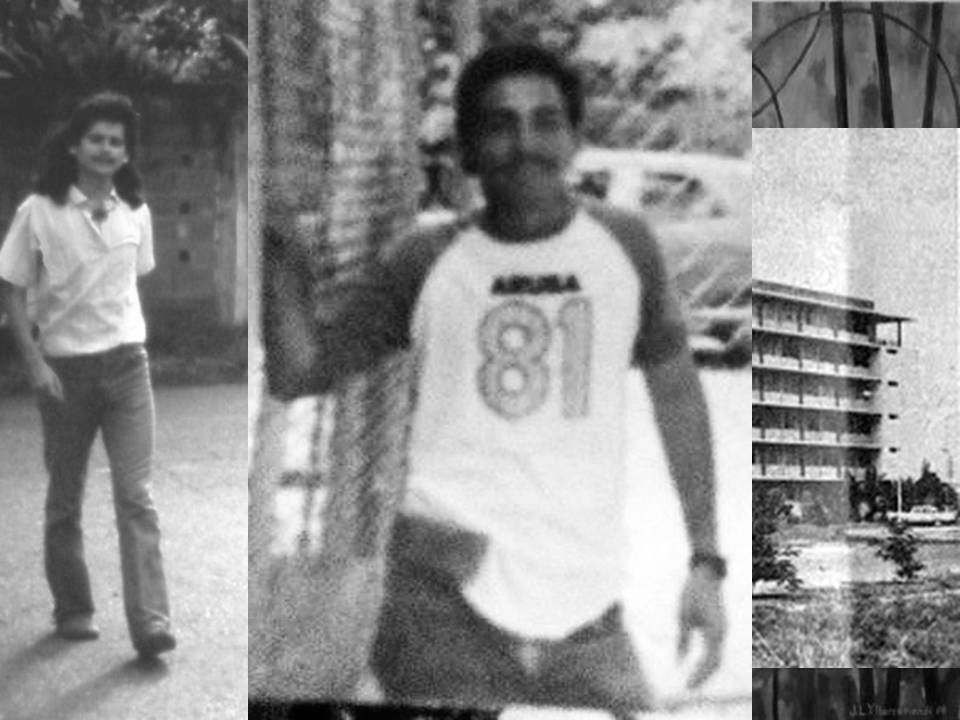
Perhaps that room never existed and this is just a simple mist that I have turned into a blurry memory. I don’t know who told me about the possibility of having a room to live in, I don’t know if it was Huertica who told me. Since I needed a place to dump the body at night, I decided to go and see what the cock was like.
I think I went just to ask or maybe I went with Huertica. I don’t remember who I talked to, time erases my face and the name of the friend with whom I talked. She told me that there was no problem, that she could live there. The room was on the third floor at the end of the hall. It was necessary to put a door on it and cover the other two entrances.
I covered the entrances with papier mâché, but I’m not sure how it went. I don’t know where I got it from the door, it was lying in some courtyard; it was a piece of shit door all chipped and of course half painted or rather half unpainted. It was from some bathroom, because it was narrow and I had to add a piece of board, what was left of color was poceta blue.
To take her there, Argimiro lent me his truck; Huertica was present there. Although Huertica, I think, she never lived there. We put the door, two rings for the padlock and with a black marker we wrote the number of the room. Which I don’t remember.
The truth is that I settled there, and let my soul wander.
I took one of those foam rubber mats and threw it on the floor, near the door. At the time I bought a radio in a Chinese bazaar, of those plastics. I don’t remember the color. I turned it on and never turned it off again. It worked until it burned out. No TV, never owned or bought shit like that.
I also bought a wind-up alarm clock, one of those round ones that brought a hen that pecked corn with some chicks. It ended next to some black candles. It was used to get to math classes early, which were at seven in the morning. In that room I solved all the exercises in Schaum’s Descriptive Geometry book and half of Leighton’s book, but that’s another story.
There he lived like a pasha.
That third floor was diverse with people. One wing was for Easterners and the other was for Westerners. Corduroy Tadeo Rodríguez lived there, who was studying engineering and was from Churuguara. I was like Cabral’s song, neither from here nor from there.
I don’t know if Funche already lived in the building or if he arrived later. Chepel did come later and I think he lived one floor up. The goajiro Jorge Villegas lived on the second floor, the unfortunate drank three or four glasses of water every night to go to bed with a full belly.
Next to him lived his son Luis Duran, always a dear friend. As we were all balls peelers we passed the hunger that fucks. With Luis he was a vacilón. Several times that we were peeling balls we made spaghetti; We put tomato sauce on the water, we took out the spaghetti and we drank the water as a soup, then we ate the spaghetti as a second course.
We made all that cock shit with laughter and fucking.
Pana Novosel, who was studying mathematics, spent his time riding a bicycle on the eaves of the fourth floor of the building. The women down there crossed themselves and looked at him in anguish, thinking that their mother’s cunt was going to fall off that cock. Nothing ever happened to him. Sometimes he would get it for me on weekend mornings sitting at the entrance of the building eating an onion and an arepa. Years later I saw him again, good corduroy as always.
Many social struggles arose there. That’s why before Calle 13, we were already residents.
We lived in a state of nature that not even Rousseau’s bastard.
Some time later Vidal went to live there. I don’t remember how the compadre got there either. It was a big room. It comfortably fit about six people. But he was never at his peak.
Only four people live in that room. Vidal González, Frank Gómez, Ramón Sibira and who counts here. If Huertica lived there it was for a short time, because I don’t remember it.
Once Vidal and I took to being filthy. And we would throw all the cock on the floor. In the room it would be just him and me to do that cock. As much cock as we had, we threw it on the floor and, of course, nobody cleaned it up. That was full of bags, girl’s quarters, paper, cardboard; no food, because we ate at Juanita’s or Amparo’s. Half a room looked like a homeless man’s pigsty or a landfill. Until one day we get fed up with so much shit and clean up.
Frank Gomez was a character. He had come from the Paraguaná Peninsula, I think from the Moruy side. He was a dark fucker, but parsimonious. He was studying civil engineering. Half silent, a quiet fuck; but that he always came out with some joke. Sometimes he was lying down looking at the ceiling and suddenly he would get up, go out into the hall and shout at the top of his lungs:
—I want to be penetrated anally.
Everyone on the floor was laughing their asses off, and at once the gocho Miguel Panza came out:
—This black queer, nogoda. That is not good for half shit.
I think they studied together.
Another cock that Frank Gómez had, was that he spent his time writing on the wall of the room existential phrases of his states of mind. He was writing on the wall next to his bed.
I think it was Vidal who realized that pod. The philosophical wall. Once we told Miguel Panza about that shit and he entered the room to see the cocks that Frank Gómez wrote, he laughed the shit out of himself and said:
—This black queer.
There wasn’t a healthy bone in that cock.
The room was quaint and from time to time someone else dropped by to see that mess. In particular, to see that blue poceta door. That he was always in his natural state of misery.
One fine day I left, and I never came back.
Then came a bastard Pope and a ferocious eviction. But, that’s where the residents remained until today.









